Business
Federal government clearly misstates its economic record
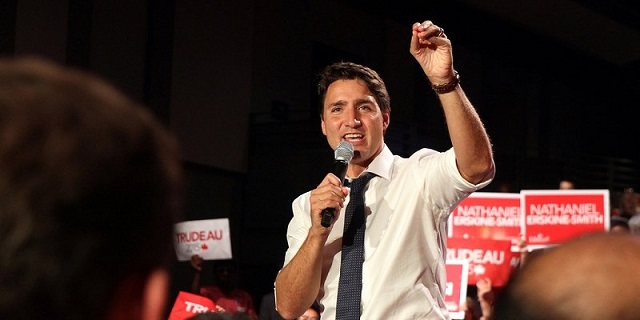
From the Fraser Institute
“since 2015 Canada has posted some of the weakest economic growth numbers, measured on a per-person basis, in half a century”
“Denominator blindness” refers to situations where people fail to put what seem to be big numbers into proper context. The affliction is especially common among governments seeking to justify their spending and other policy decisions. In Canada, denominator blindness has become a central feature of the narratives peddled by many politicians.
For example, the Trudeau government’s recent economic update, which includes a forward by Finance Minister Chrystia Freeland where she notes that the International Monetary Fund expects Canada to have “the strongest economic growth in the G7 next year.” She also insists her government is fostering economic growth that “creates middle class jobs, raises incomes, and makes middle class communities more prosperous.”
Both claims lack context and misstate the government’s economic record.
Prosperity is measured using both a numerator, typically the amount of output the economy produces in a year, and a denominator, the size of the population. A larger population means the economic pie must be divided into more slices to estimate how much “output” is available to the average resident. With a rapidly expanding population, the economy must generate a lot more output merely to stop the individual pie slices from shrinking.
Minister Freeland is correct that Canada’s economy has been growing, both since the worst of the COVID shock in late-2020/early-2021 and over the period when the Trudeau government has been in power. But she ignores the bigger picture, which shows two important things.
First, since 2015 Canada has posted some of the weakest economic growth numbers, measured on a per-person basis, in half a century. The pattern of feeble economic growth was evident before the onset of COVID.
Second, Canada is among the few advanced economies where output or gross domestic product (GDP) per person in 2023 has still not returned to pre-pandemic levels. In part, this reflects surging population growth, which affects the denominator that helps determine whether economic growth is producing gains in average incomes and living standards. In Canada’s case, modest economic growth combined with a skyrocketing population has resulted in a multi-year decline in per-person income and erosion of overall prosperity. Adjusted for inflation, GDP per person is still 2 per cent lower than in 2019.
Denominator blindness also characterizes recent attempts by the federal, Ontario and Quebec governments to explain why they’re allocating up to $50 billion in subsidies and tax incentives to lure a handful of electric vehicle battery manufacturers to Canada. The politicians making these decisions point to the several thousand jobs the EV manufacturing facilities will support once they are fully operational. But they won’t discuss how this fits within the larger job market.
Total employment in Canada is 20.1 million, with almost 1.8 million jobs in manufacturing. The vast sums being thrown at EV battery manufacturers will have essentially no impact on the aggregate job numbers and barely make a ripple, even in the manufacturing sector. Moreover, not all the promised EV jobs will be “new” positions—many workers attracted to the EV industry will likely be drawn from other businesses, worsening skill shortages that are plaguing Canadian manufacturers.
Perhaps aspiring politicians should be required to study the basic arithmetic of fractions before they run for office.
Author:
Business
Largest fraud in US history? Independent Journalist visits numerous daycare centres with no children, revealing massive scam

A young journalist has uncovered perhaps the largest fraud scheme in US history.
He certainly isn’t a polished reporter with many years of experience, but 23 year old independent journalist Nick Shirley seems to be getting the job done. Shirley has released an incredible video which appears to outline fraud after fraud after fraud in what appears to be a massive taxpayer funded scheme involving up to $9 Billion Dollars.
In one day of traveling around Minneapolis-St. Paul, Shirley appears to uncover over $100 million in fraudulent operations.
🚨 Here is the full 42 minutes of my crew and I exposing Minnesota fraud, this might be my most important work yet. We uncovered over $110,000,000 in ONE day. Like it and share it around like wildfire! Its time to hold these corrupt politicians and fraudsters accountable
We ALL… pic.twitter.com/E3Penx2o7a
— Nick shirley (@nickshirleyy) December 26, 2025
Business
“Magnitude cannot be overstated”: Minnesota aid scam may reach $9 billion

Federal prosecutors say Minnesota’s exploding social-services fraud scandal may now rival nearly the entire economy of Somalia, with as much as $9 billion allegedly stolen from taxpayer-funded programs in what authorities describe as industrial-scale abuse that unfolded largely under the watch of Democrat Gov. Tim Walz. The staggering new estimate is almost nine times higher than the roughly $1 billion figure previously suspected and amounts to about half of the $18 billion in federal funds routed through Minnesota-run social-services programs since 2018, according to prosecutors. “The magnitude cannot be overstated,” First Assistant U.S. Attorney Joe Thompson said Thursday, stressing that investigators are still uncovering massive schemes. “This is not a handful of bad actors. It’s staggering, industrial-scale fraud. Every day we look under a rock and find another $50 million fraud operation.”
Authorities say the alleged theft went far beyond routine overbilling. Dozens of defendants — the vast majority tied to Minnesota’s Somali community — are accused of creating sham businesses and nonprofits that claimed to provide housing assistance, food aid, or health-care services that never existed, then billing state programs backed by federal dollars. Thompson said the opportunity became so lucrative it attracted what he called “fraud tourism,” with out-of-state operators traveling to Minnesota to cash in. Charges announced Thursday against six more people bring the total number of defendants to 92.
BREAKING: First Assistant U.S. Attorney Joe Thompson revealed that 14 state Medicaid programs have cost Minnesota $18 billion since 2018, including more than $3.5 billion in 2024 alone.
Thompson stated, "Now, I'm sure everyone is wondering how much of this $18 billion was… pic.twitter.com/hCNDBuCTYH
— FOX 9 (@FOX9) December 18, 2025
Among the newly charged are Anthony Waddell Jefferson, 37, and Lester Brown, 53, who prosecutors say traveled from Philadelphia to Minnesota after spotting what they believed was easy money in the state’s housing assistance system. The pair allegedly embedded themselves in shelters and affordable-housing networks to pose as legitimate providers, then recruited relatives and associates to fabricate client notes. Prosecutors say they submitted about $3.5 million in false claims to the state’s Housing Stability Services Program for roughly 230 supposed clients.
Other cases show how deeply the alleged fraud penetrated Minnesota’s health-care programs. Abdinajib Hassan Yussuf, 27, is accused of setting up a bogus autism therapy nonprofit that paid parents to enroll children regardless of diagnosis, then billed the state for services never delivered, netting roughly $6 million. Another defendant, Asha Farhan Hassan, 28, allegedly participated in a separate autism scheme that generated $14 million in fraudulent reimbursements, while also pocketing nearly $500,000 through the notorious Feeding Our Future food-aid scandal. “Roughly two dozen Feeding Our Future defendants were getting money from autism clinics,” Thompson said. “That’s how we learned about the autism fraud.”
The broader scandal began to unravel in 2022 when Feeding Our Future collapsed under federal investigation, but prosecutors say only in recent months has the true scope of the alleged theft come into focus. Investigators allege large sums were wired overseas or spent on luxury vehicles and other high-end purchases. The revelations have fueled political fallout in Minnesota and prompted renewed federal scrutiny of immigration-linked fraud as well as criticism of state oversight failures. Walz, who is seeking re-election in 2026 after serving as Kamala Harris’ running mate in 2024, defended his administration Thursday, saying, “We will not tolerate fraud, and we will continue to work with federal partners to ensure fraud is stopped and fraudsters are caught.” Prosecutors, however, made clear the investigation is far from finished — and warned the final tally could climb even higher.
-

 Censorship Industrial Complex4 hours ago
Censorship Industrial Complex4 hours agoUS Under Secretary of State Slams UK and EU Over Online Speech Regulation, Announces Release of Files on Past Censorship Efforts
-
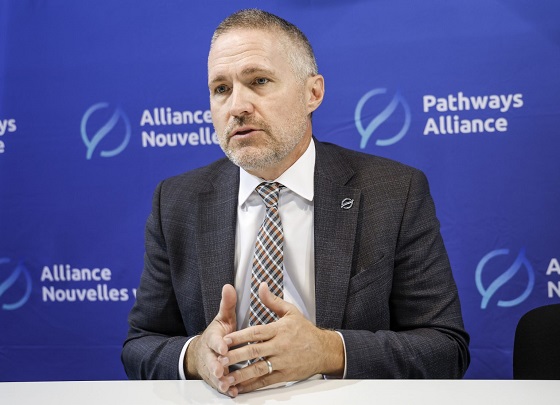
 Alberta1 day ago
Alberta1 day agoAlberta project would be “the biggest carbon capture and storage project in the world”
-
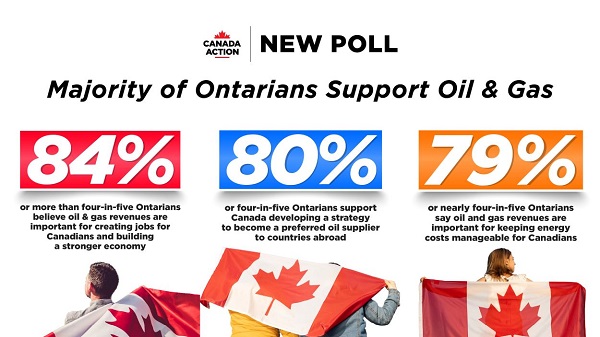
 Energy1 day ago
Energy1 day agoNew Poll Shows Ontarians See Oil & Gas as Key to Jobs, Economy, and Trade
-

 Business6 hours ago
Business6 hours ago“Magnitude cannot be overstated”: Minnesota aid scam may reach $9 billion
-
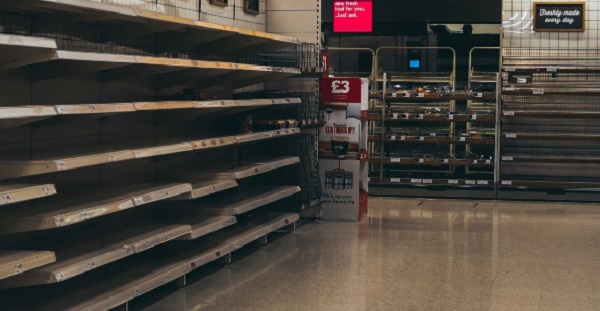
 Business1 day ago
Business1 day agoSocialism vs. Capitalism
-
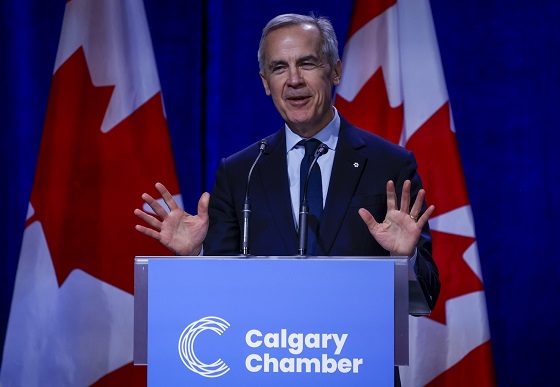
 Energy1 day ago
Energy1 day agoCanada’s debate on energy levelled up in 2025
-

 Fraser Institute2 days ago
Fraser Institute2 days agoCarney government sowing seeds for corruption in Ottawa
-

 Daily Caller20 hours ago
Daily Caller20 hours agoIs Ukraine Peace Deal Doomed Before Zelenskyy And Trump Even Meet At Mar-A-Lago?










